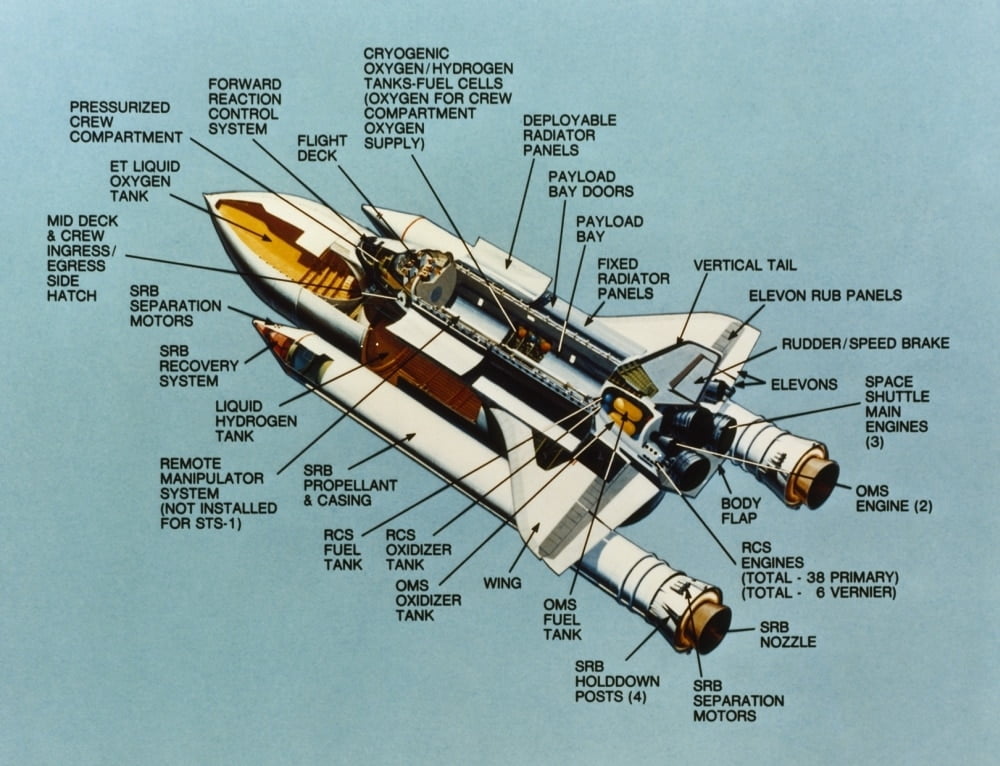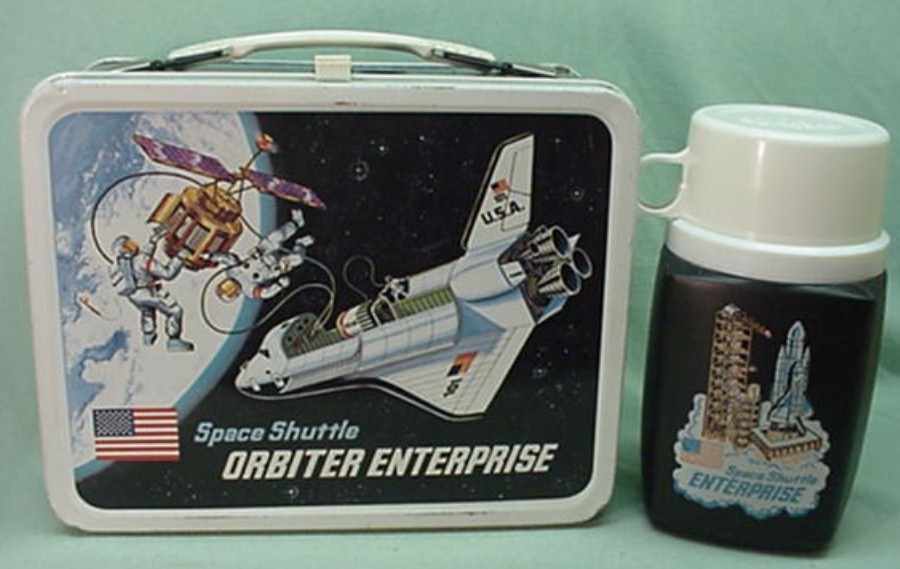
Other models, like the Moffett Field model, represented only the Orbiter, as it returned from space and slowed from hypersonic speeds to a gliding landing on a runway. Some of the models represented the entire shuttle stack, with External Tank and Solid Rocket Boosters these models simulated the launch of the shuttle into orbit. The Moffett Field model was the largest of several Space Shuttle models tested in the wind tunnels at NASA Ames from the early 1970s until the end of the Space Shuttle program in 2011. During the development of the Space Shuttle in the 1970s, NASA tested the model extensively in the large 40-by 80-foot wind tunnel at Ames Research Center at Moffett Field. Unlike Endeavour, the Moffett Field model never flew into space but as a precision engineering model, it had its own important role to play in the Space Shuttle program. It has 6 degrees of freedom, an overall length of 15.24 m, and while the hold doors are closed, it is folded along the port side of the shuttle.Although there are no plaques or historical markers anywhere to attest to this fact, the model is in fact a relic of the Space Shuttle program, like the orbiter Endeavour in Los Angeles. It was built by the Canadian company SPAR AEROSPACE Ltd. Most of the satellites carried by the shuttle require gentle handling and precise alignment in orbit. The length of the rockets is 45.36 m, diameter is 3.708 m. Booster rockets are the largest devices of this type used in space flights.

After disconnection and launching, the auxiliary rockets are recovered, overhauled and can be used on one of the next expeditions. Permanent propellants accelerate the space shuttle during the first two minutes of flight and operate in parallel with the three main engines. It is the only non-recoverable component of the shuttle system. His remains fall into the Indian or Pacific Oceans. Upon completion of work (8.5 minutes) after take-off, it is thrown back and disintegrates upon entering the dense layers of the atmosphere. It absorbs the stresses caused by the thrust of booster rockets and main engines. It houses the propellants for the main engines of the shuttle and provides the support structure for the entire system during take-off.

Similar in size to a medium-sized passenger jet, eg the DC-9, it is a tailless, cantilevered low-wing double-delta wing, powered by rocket engines. The shuttle is by far the most complex of any aircraft ever built. At take-off, its action in combination with the rest of the elements resembles a rocket, in orbital flight it is an artificial satellite, and when it returns to the ground it becomes a glider. On April 12, 1981, at 700 AM EST, in the presence of approximately one million spectators at Cape Canaveral, COLUMBIA rose into the sky on a pillar of fire and smoke, ushering in the era of reusable space vehicles.ĬHARACTERISTICS OF THE SPACE SHUTTLE COLUMBIAĬonsidering it as an aircraft structure, it is difficult to classify this vehicle as a specific family of flying ships. In fact, this event did not happen until two years later. The success of the ENTERPRISE test flight program suggested that the next shuttle, COLUMBIA, would be launched into orbit in 1979. On January 29, 1979, NASA signed a new contract with ROCKWELL to build new shuttles: CHALLENGER (challenging) DISCOVERY (discovery) and ATLANTIS. On March 27, 1975, assembly of the 0V -102 shuttle, COLUMBIA, began. ENTERPRISE left the assembly station on September 16, 1976, after which it was subjected to tests including approaches and landings, launcher vibration, durability of engines and booster rockets with external tank, and shuttle avionics. Its task was to undergo a test program so that the next shuttle (OV -102) could start flights into orbit after the completion of construction.

ENTERPRISE was not intended for space flight.
MODEL OF 1981 SPACE SHUTTLE ENTERPRISE WOODEN BASE SERIES
The first of the shuttles, the construction of which began on June 19, 1974, was named ENTERPRISE at the request of viewers of the popular science fiction television series "STAR - TREK", and after the names of two famous U.S.


 0 kommentar(er)
0 kommentar(er)
